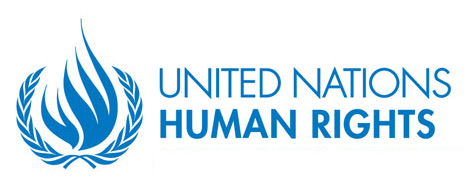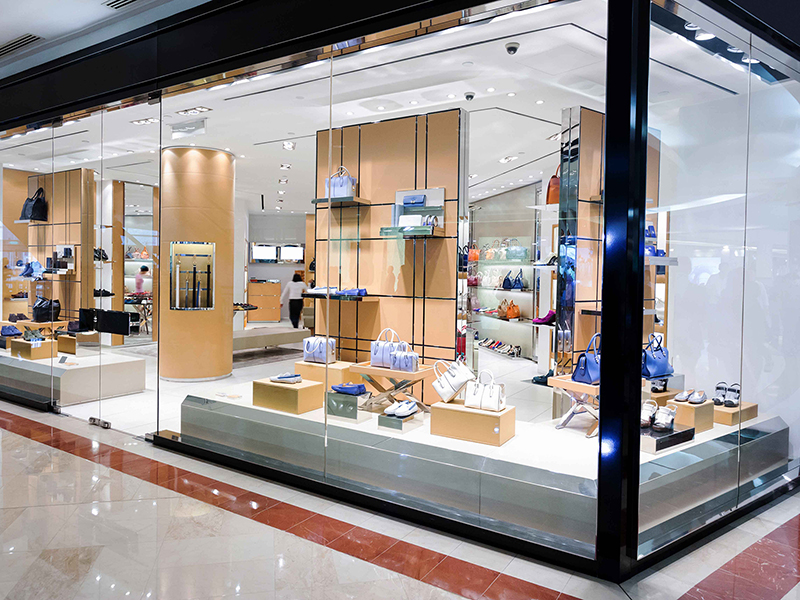Human rights are inherent to all human beings. They are defined and established in more than 80 international legal instruments and define the fundamental protections of human dignity, needs, and freedoms, such as food, housing, privacy, personal security, and democratic participation. Since the adoption of the Universal Declaration of Human Rights (UDHR) in 1948, the responsibility to protect human rights has primarily fallen on governments. Beginning in the early 2000s, however, it became increasingly clear that the freedoms enshrined in the framework could also be violated—and promoted—by the private sector. In 2011, the UN Human Rights Council unanimously endorsed the UN Guiding Principles on Business and Human Rights (UNGPs), the first international instrument to assign companies the responsibility to respect human rights.
The Guiding Principles state that companies must refrain from negatively impacting rights even when governments are failing to create or enforce necessary laws and that those victims of corporate abuses must have access to an effective remedy.
As part of this responsibility, the Guiding Principles require companies to actively identify and manage the negative human rights impacts that they may cause directly and those to which they contribute through their business practices and relationships. There are several key actions a company can take as part of this due diligence cycle: conduct a human rights assessment to determine which potential human rights impacts are most salient to their business, develop and publish a human rights policy to communicate expectations to stakeholders and business partners, ensure they have robust stakeholder engagement processes in place to support ongoing monitoring of potential or actual impacts and proactive action or remedy.
This issue brief identifies the 10 most relevant, urgent, and probable human rights impacts for businesses operating in the luxury sector. The information here is gathered from BSR’s direct engagement with luxury sector companies, as well as our 30 years of experience helping companies in all sectors manage their human rights risks.
The luxury sector comprises a wide range of businesses and activities, from manufacturing, including raw material production and processing, retailing, and distribution, to marketing and advertising of luxury goods. These include jewelry and watches, apparel, accessories, and eyewear.
While each of these different business activities will have its own human rights profile and challenges, this brief highlights universal risks for companies operating in the luxury sector. This spans the design and concept stage, sourcing and mining of raw materials ranging from cotton to exotic animal skins to gemstones, processing and manufacturing, packaging, and retailing, and disposal and destruction of unsold inventory, encompassing all the workers and local communities involved.
Top Human Rights Risks
1: Child Labor
The sourcing of raw materials often used to manufacture luxury goods, such as jewelry, watches, bags, apparel, and footwear, is under increased scrutiny due to the elevated risk of child labor in mining and agricultural processes, especially in the lower tiers of the supply chain. For example, child labor is prevalent in diamond and gemstone supply chains, cutting and polishing centers, and exotic leather and smallholder farm suppliers. This includes the worst forms of child labor given the hazardous nature of work in small-scale mining areas in countries such as Ghana, Mali, Philippines, and Tanzania, with children exposed to mercury used in the process and increased risk of mining accidents and deaths. Child labor and juvenile work are also prevalent at all stages of the supply chain in apparel and footwear, from the production of key raw materials such as leather and cotton from harvesting through to assembling garments in factories. Companies can ensure that their raw materials are responsibly sourced and work with suppliers to improve transparency and traceability within their supply chains to eliminate and address the root causes of child labor.
2: Working Conditions
Forms of modern slavery, including forced labor, may occur in the raw materials supply chains of luxury companies. Workers in raw material supply chains may be subject to labor abuses, including forced or bonded labor conditions. Undocumented migrants are particularly vulnerable. For example, some who are engaged in the manufacturing of fine leather goods in Italy have faced the risk of forced labor and poor working conditions, including low wages, unpaid overtime, and excessive working hours across the leather supply chain.
The presence of forced labor and exploitation of migrant workers has been well documented in countries such as Haiti, Indonesia, Turkey, and Madagascar, where natural ingredients are sourced and regulations and social protections are weak. Workers in some non-precious raw material value streams are also exposed to poor and precarious conditions. In Italy, reports have highlighted risks of excessive working hours and low wages as well as the presence of illegal and undeclared workers. In the slaughterhouses of leather supply chains, many reports highlight extremely hazardous, physically demanding work, and low wages.
3: Supply Chains
Raw materials are the greatest area of human rights concern for luxury companies, with violations documented at the upstream and midstream phases. Supply chains for diamonds vary in length and complexity, typically sourcing from large-scale and small-scale mines. Risks are particularly prevalent in the sourcing of diamonds, colored gemstones, leather, cotton, metals, and exotic animal skins.
Traceability of the origins of PGM (Platinum Group Metals) materials, watchmaking components, (including steel) and pearls, is limited, which also restricts visibility of any potential abuses and potential involvement of luxury companies linked to these supply chains. Regardless of the scope of company procurement, it is crucial to conduct supply chain mapping to identify the greatest risks, investigate compliance with human rights principles and local laws, and, where possible, remediate violations if they occur. Companies need to identify and prioritize the most severe potential violations in their supply chains and take action to prevent them. These actions can include supplier training on good labor practices, clear expectations in contracts, and supplier monitoring.
4: Occupational Health and Safety
There are high risks of health and safety impacts across the luxury sector value chain, including toxic chemical exposure, musculoskeletal disorders, respiratory diseases, heat stress, injuries, ground-level falls, and misuse of personal protective equipment (PPE), as well as mental health and stress.
Leather tanneries expose workers to a particularly hazardous working environment due to the chemicals used, while working conditions among farm workers vary from exposure to toxic agrochemicals, injuries caused by sharp tools, insects, and animal bites, to heat stress. Workers involved in the production of packaging, visual merchandising, and store design may face slips, trips, handling of machinery or sharp objects, cuts, dust from paper mills, non-ergonomic handling, and chemicals in plastic manufacturing.
Fatal accidents and exposure to harsh conditions are commonly reported in mining, as well as long-term respiratory conditions and other occupational diseases and mental health issues in the cut and polish sector. Companies can have adequate health and safety standards in place and mitigate risks of harm to the health and wellbeing of workers and communities within operations and supply chains.
5: Diversity, Equity, and Inclusion
Companies are increasingly expected to not only respect but promote diversity, equity, and inclusion within operations and across their value chain, including recognizing their role in the cultural appropriation of certain fashion styles or influences. Women are key to the luxury sector, and as outlined in a report published in 2018 by BSR’s Responsible Luxury Initiative, in 2015, women accounted for 85 percent of luxury sales and represented 40 percent of designers. However, women in the luxury sector continue to face widespread discrimination and harassment and are often subjected to gender stereotypes. Moreover, the luxury sector has been criticized for its lack of representation of marginalized communities, further reinforcing socioeconomic divisions and inequality. This may be most reflected in marketing and advertising practices, which often do not reflect underrepresented demographics.
Additionally, vulnerable groups, including LGBTIQ+ peoples, Indigenous Groups, and migrants in the upstream and midstream precious materials value chain, may face discrimination, harassment, and other gendered impacts. Companies should commit to taking meaningful action to advance principles of diversity, equity, and inclusion across their value chains and ensure this is reflected in all business activities, including marketing and advertising.
6: Conflict-Affected and High-Risk Areas
Downstream luxury companies, such as jewelers and other retailers, source gemstones, including diamonds, implicating a broad range of human rights. It is not limited to conflict regions but applies to all areas that are “high-risk”, such as areas of armed conflict, political instability, repression, institutional weakness, insecurity, the collapse of infrastructure, widespread violence, violations of national or international law, or “other risks of harm to people.” Sourcing activities in conflict-affected and high-risk areas may lead to heightened risks of safety and security as well as bribery and corruption. Companies can identify and assess actual or potential adverse human rights impacts and take appropriate action to address them. They can identify leverage to prevent the use of their products, services, or assets in atrocity crimes or other human rights abuses.
7: Access to Remedy
Access to remedy is a core element of the UN Guiding Principles on Business and Human Rights and a fundamental right under international law. The lack of an effective remedy for individuals and communities who suffer human rights abuses directly or indirectly related to companies is a grave concern. All companies with extractive projects are almost certain to have human rights impacts—therefore, the assessment and remedy of any negative impacts are critical. While large mining operations generally have grievance channels in place at the corporate level, they are not always accessible to all rightsholders. It is unclear whether workers in metal processing and refineries can report concerns through formal channels; smaller cut and polish factories are unlikely to have access to grievance mechanisms.
All companies should have clear operational grievance mechanisms to help identify negative impacts, provide a remedy, and cooperate in government-led initiatives or other third-party mechanisms.
8: Adverse Impacts on Environment & Biodiversity
When luxury companies source raw materials for luxury goods, it can have an impact on the environment, biodiversity, natural resources, lands, and livelihoods surrounding local communities. Negative impacts can also be found in the manufacturing process and packaging, as well as sourcing from textile suppliers, which can generate harmful consequences if poorly managed, including solid waste pollution, water contamination due to the usage of toxic chemicals, and air contamination. This may negatively impact the right to health, access to land and water, and traditional livelihoods, particularly in instances where companies source from suppliers based in emerging economies close to surrounding communities. Companies can ensure that environmental mitigation measures are put in place and that effective remedies are provided to remediate any environmental consequences that impact the human rights of their workers and communities.
9: Bribery and Corruption
Corruption is pervasive in upstream and midstream value chains of the luxury sector, especially where companies engage in the sourcing of raw materials in high-risk contexts. This is most prevalent in autocratic countries, where corruption is carried out by state-owned enterprises, or overseen by politically connected individuals. Corruption and bribery also disproportionately affect poorer, vulnerable communities—either by misdirecting funds that could be spent on healthcare, education, or other public goods or by preventing participation in the democratic process. Luxury sector companies can ensure that any engagement in high-risk contexts where there is a risk of bribery and corruption proceeds according to international norms of transparency and accountability.
10: Marketing and Advertising
Marketing and advertising of luxury goods may contribute to adverse human rights impacts through the promotion of discriminatory stereotypes and a lack of diversity in gender, sexuality, age, and socioeconomic status. The association of luxury with certain demographics and unrealistic standards of beauty through advertising can have detrimental impacts on mental and physical health, especially when targeted to vulnerable groups such as minors.
Companies can actively work to remove racial, gender, and socioeconomic stereotypes and challenge societal norms by being more inclusive when considering gender, race, class, and sexuality in their portrayals of people through a variety of media.
Top 3 Opportunities for Positive Impact
1: Living Wage and Community Development
Paying a living wage to industry workers in raw material production, processing, manufacturing and retail represents the most important opportunity for luxury brands. Payment of living income and wages can be complemented by community development programs. Sourcing and purchasing value chains of luxury companies extends to many developing countries and rural communities where a range of resilience and local economic development programs can be developed or supported.
2: Gender Equity
Women and other vulnerable people contribute to the products and services that are needed in luxury supply chains. In geographies where discrimination and gender-based violence are high, there are opportunities to support diversity programs as well as programs like BSR’s HERproject that work to empower women across a variety of subjects, including financial literacy and women’s health issues.
3: Supporting Human Rights Defenders
In high-risk and conflict-affected areas where many luxury companies source precious raw materials, there are opportunities to support human rights defenders who denounce corruption and violations of fundamental rights.
Let’s talk about how BSR can help you to transform your business and achieve your sustainability goals.





